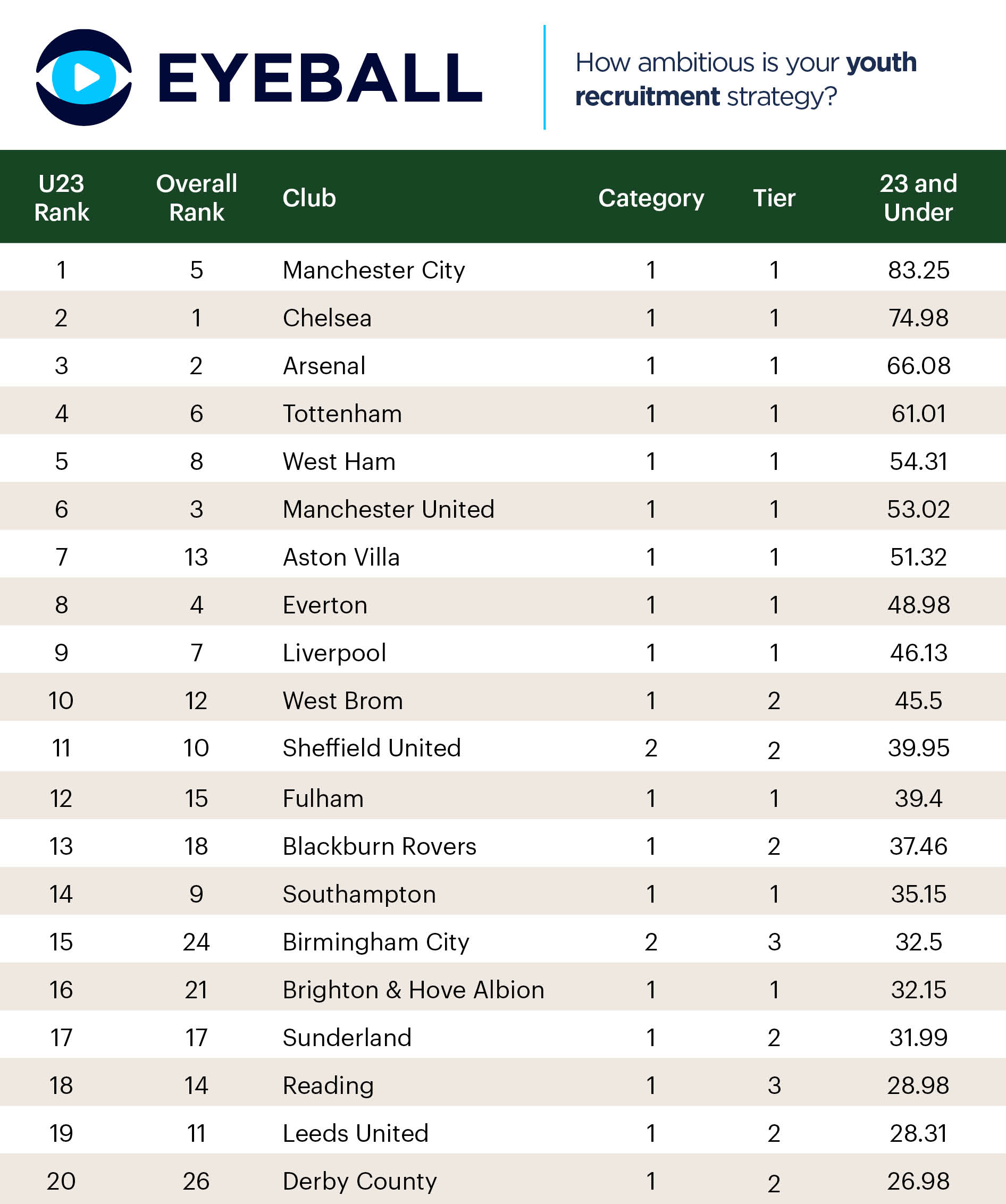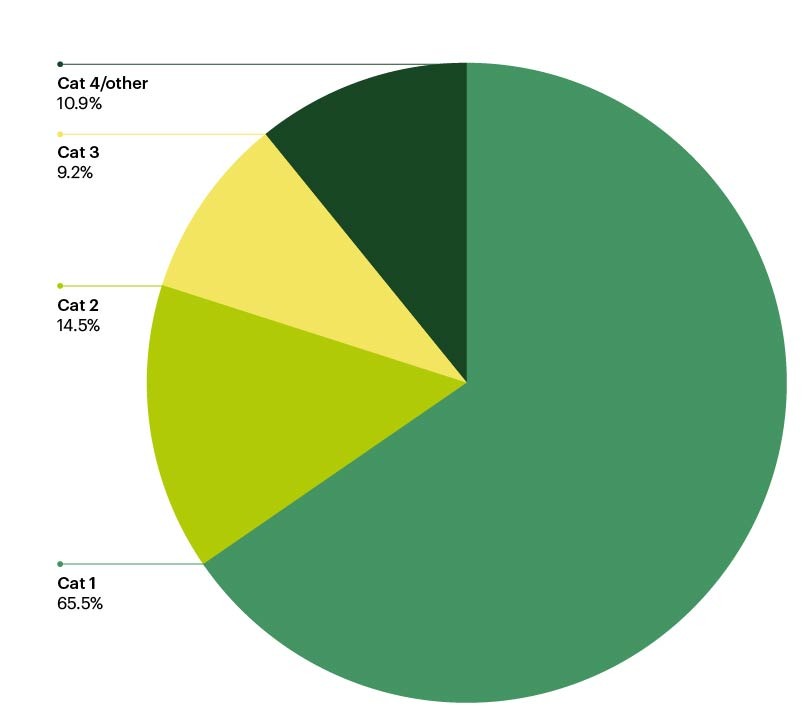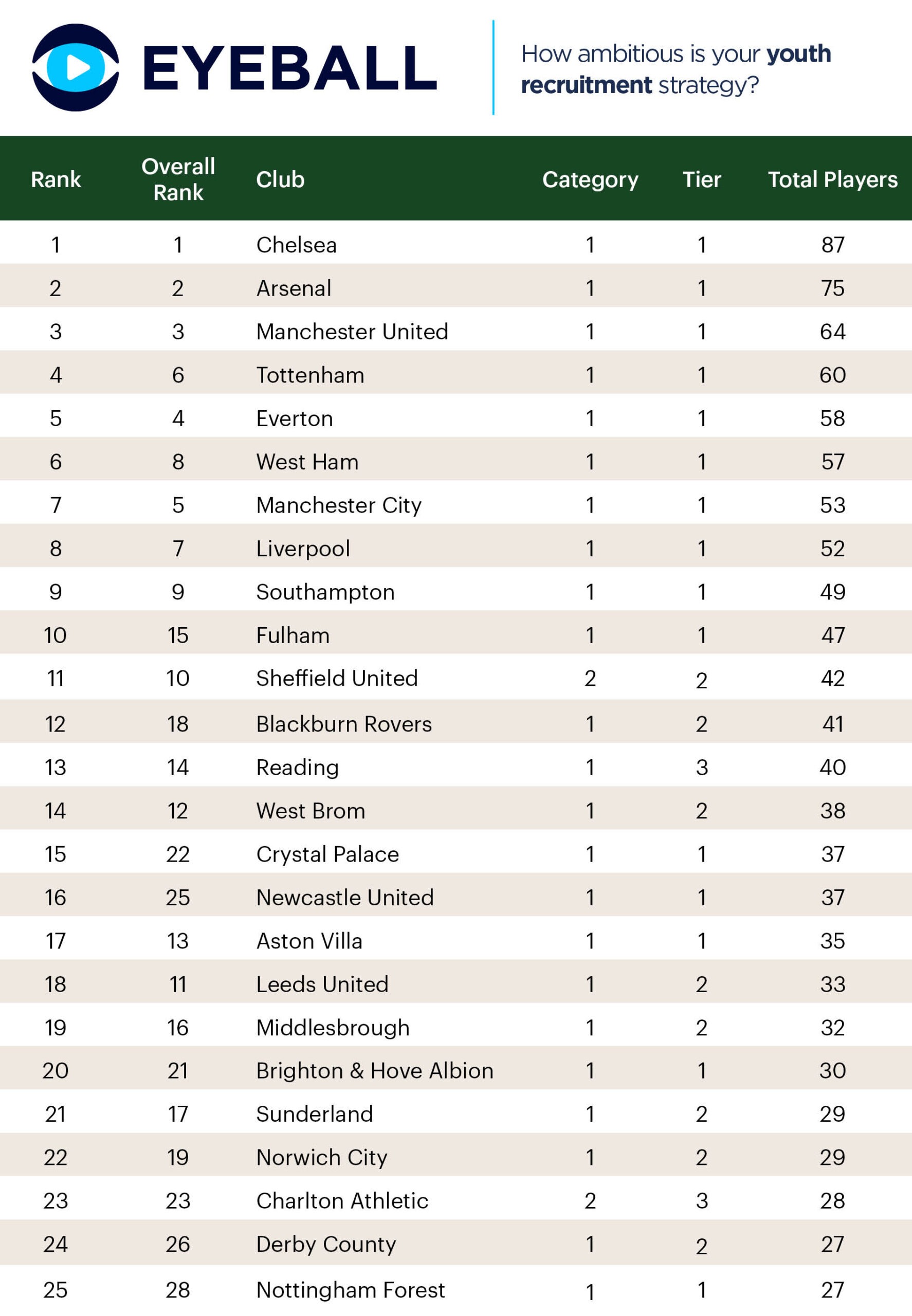
Academy Rankings 2024/25: Behind the Numbers
Written by
Josh Schneider-Weiler
September 9, 2025
Manchester City had more graduates aged 23 and under who made a league appearance in 2024/25, suggesting a rise for the club in future editions of TGG’s Academy Productivity Rankings.
A total of 34 City Academy graduates aged 23 and under, including Phil Foden (pictured), played at least one league game in one of the top five English divisions or other four major European leagues last season.
City were just ahead of Chelsea, who topped the overall Rankings, Arsenal and Tottenham in these ‘future Rankings’, which assess clubs according to the number of players aged 23 and under that they produced.
Other clubs doing well at producing young talent are West Ham United and Aston Villa. The Hammers are fifth in this table (8th overall), while Villa are seventh, but only 13th in the main Rankings.
Sheffield United, as in the main list, are the top Category Two club – 11th here and 10th in the main table – ahead of Birmingham City, who are 15th here and 24th overall.
Everton, who jumped up to fourth in the main Rankings, are eighth in the Future List, Leeds United – 11th in the main Rankings – are 19th here, Leicester City (20th overall) are 28th here and Norwich City (19th overall) are 32nd in this list.

Not surprisingly, the Category One Academies produce the highest percentage of Premier League players in these Rankings (see below), although the percentage of 65.5% is down nearly 10% from last year’s 74%. However, it is higher than the 2022 figure of 61.7%.

This year’s figure rises slightly to 66.9% if you include players in the other top four European leagues. (see below)

Chelsea were by far the most successful club in terms of producing players for the ‘Big Five’ European leagues (including the Premier League), with 18 Academy graduates making league appearances last season.
Category One Academies had an average of 4.23 players making one or more appearance in those leagues. The average Category One Academy had nearly three times as many elite players as the average Category Two Academy – and more than 12 times as many players as the average Category Three Academy.
We weight the rankings, so Premier League appearances are worth more points than Championship ones and so on. However, some Academies are excellent at producing talent for lower down the pyramid and this should not be ignored.
The table below ranks Academies according to the total number of players they produced, without the weighting. Suddenly Fulham (15th overall) climb into the top 10, Crystal Palace (22nd overall) rise to 15th and Newcastle United (25th overall) rise to 16th.

Methodology
This is the sixth edition of Training Ground Guru’s Academy Productivity Rankings and I have followed the same methodology as in previous years.
A list was compiled of male English players (ie players eligible in the 2024/25 season to play for the England men’s national team) who played in at least one match for any team in the top five English leagues, based on data from the www.fbref.com website for the Premier League, Championship, League One, League Two and the National League.
Information on the Academy, or Academies, attended by each English player who had made at least one league appearance was then collated and cross-referenced from information in Wikipedia, club biographies, news sources and www.Transfermarkt.co.uk. A total of 1,814 players qualified for this study under these criteria.
An Academy, Centre of Excellence or other club training structure was counted as having contributed to a player’s development if he was in attendance there at any point up to the age of 18.
As in previous editions, a weighting is applied according to the league in which the player appeared, with more points given if they played in the Premier League and so on.
If they played in more than one Academy (as many did) then the points are split evenly between them. There are players who may have been produced by these Academies who, for various reasons, may not be included in the research.
Players who are not listed as English on www.fbref.com were not included.
For the second consecutive year, we have decided to omit Welsh clubs from the rankings, even though they are part of the Elite Player Performance Plan. This is because we are only counting English players and this is a tremendous disadvantage for teams like Cardiff City, Newport County, Swansea City and Wrexham for obvious reasons.
Also for the second time, qualified players in the Bundesliga, Ligue 1, Serie A and La Liga were counted in these rankings. However, players in other European leagues were not counted.
For TGG Members Only:
Extra coverage of the 2024/25 TGG Academy Productivity Rankings:
Previous editions of the Rankings:
- 2016/17: 1. Manchester United, 2. Arsenal, 3. Chelsea. SEE FULL TABLE
- 2017/18: 1. Manchester United, 2. Arsenal, 3. Tottenham. SEE FULL TABLE
- 2020/21: 1. Manchester United, 2. Arsenal, 3. Chelsea. SEE FULL TABLE
- 2021/22: 1. Chelsea, 2. Manchester United, 3. Arsenal. SEE FULL TABLE
- 2023/24: 1. Chelsea, 2. Arsenal, 3. Manchester United. SEE FULL TABLE
This article is for TGG Members
To view this full article you need to be a TGG Member. Join up today and also get full access to:
- 20+ Masterclasses & Webinars
- Full Academy Productivity Rankings & analysis
- Club Directory with 96 clubs & 1,000+ staff profiles
- Personal Profile Builder to showcase yourself to the industry
- TGG Live 2024 & 2025 presentations
